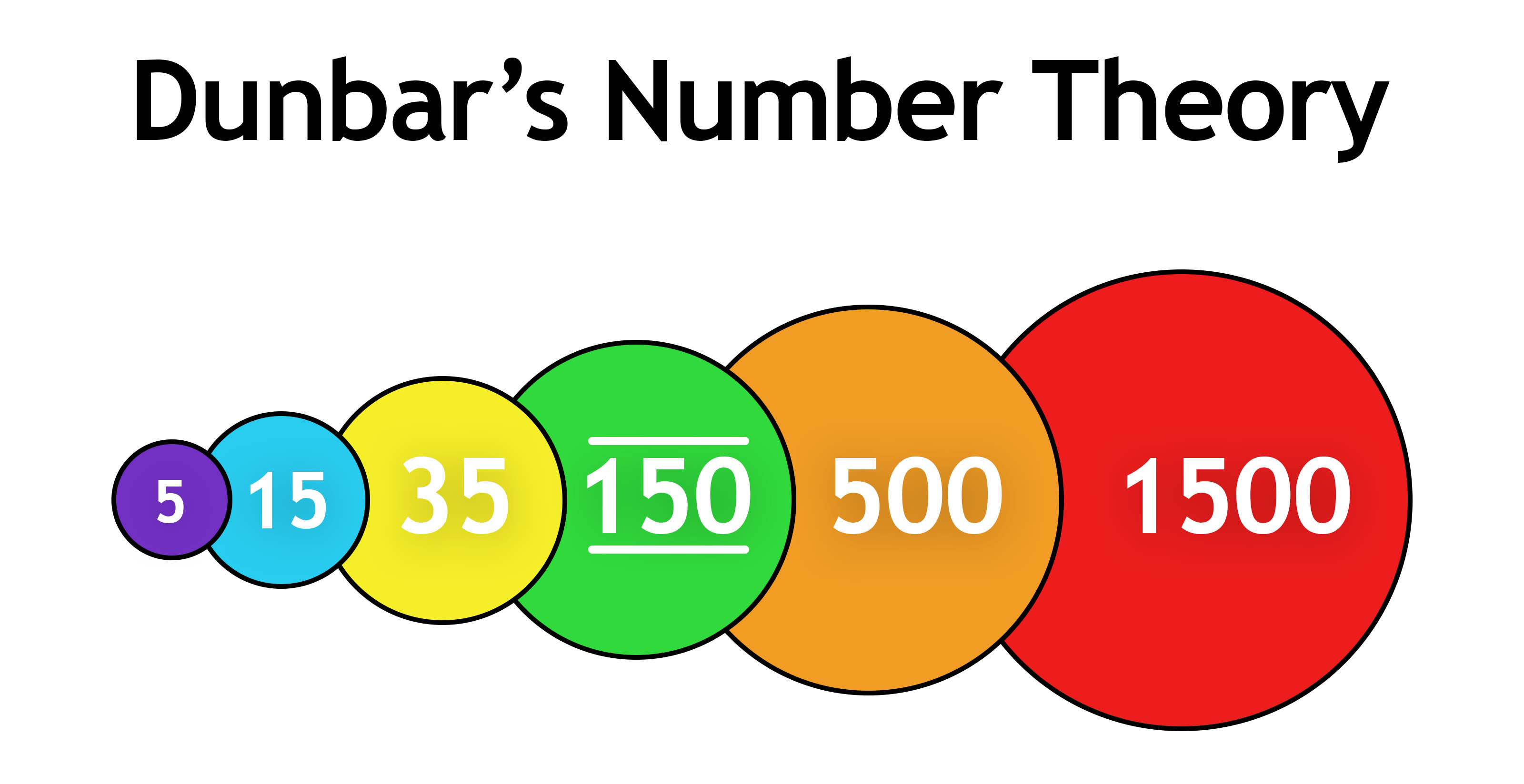What is Dunbar’s Theory?
.jpg)
An idea created by British Anthropologist Robin Dunbar in the 1990s, the Dunbar Number is a theoretical limit on human social interactions
We all understand the importance of creating and maintaining good relationships both in and outside of work… but if you’ve ever asked the question “can you have too many friends?”, then Dunbar’s Number Theory will surely be of interest to you. Today, we’re going to look at this well-known theory and how it matches up to the complexities of today’s social environment.
Dunbar's number theory is similar to other teamwork theories such as Tajfel’s social identity theory, Patrick Lencioni's theory and Maslow’s hierarchy of needs.
What is Dunbar's Number?
After studying primates and their social structures, Robin Dunbar applied his findings to humans, suggesting that we can maintain a maximum of 150 stable relationships. These relationships can include past colleagues, school friends, or old acquaintances that can be easily reconnected with. Dunbar also examined various groups throughout history—like Roman legion soldiers and hunter-gatherer societies—and found that many of these groups hovered around that same number of 150.
Dunbar’s theory posits that social group size is directly linked to the neocortex, the part of the brain responsible for cognition, language, and sensory perception. While it’s possible to maintain additional social connections, doing so often requires stricter rules and norms to keep the group cohesive.

How is Dunbar’s Number Used?
Today, this theory finds applications in various areas, from social networking sites to studies in evolutionary psychology. It’s also been used to examine interpersonal groups in online video games and by business managers to identify the ideal workgroup size. Dunbar even conducted a study in 2010 related to the popular social media platform Facebook, asserting that his theory still holds true based on his observations.
One of the most notable examples is W.L. Gore & Associates, which used trial and error to determine the optimal group size. They found that social issues began to emerge when Dunbar’s Number was exceeded, leading the company to design facilities that accommodate a maximum of 150 employees, constructing new ones as staff numbers grow.
How can Dunbar's Number Theory Apply to the Workplace?
Dunbar's Number Theory highlights that there are limits to the number of meaningful relationships individuals can maintain. It suggests that humans can handle a maximum of 150 stable connections, which encompass family, friends, and colleagues. In the workplace, this underscores the importance of fostering a sense of community and building relationships with colleagues to create a positive environment.
However, it's crucial to acknowledge that maintaining meaningful connections with everyone in a large organisation can be challenging. By applying Dunbar's Number Theory, organisations can prioritise building smaller, more cohesive teams. This approach enables individuals to forge strong relationships and collaborate effectively towards common goals.
To enhance these dynamics, consider incorporating team events that align with Dunbar's insights. Engaging in targeted experiences not only strengthens relationships but also helps create a more connected and productive work environment. Explore our range of team building activities to find the perfect fit for your organisation and start building those essential connections today!
Plan your Team Day
We organise 100's of team building events each year
